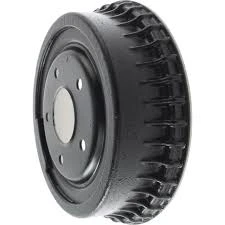
-
 Afrikaans
Afrikaans -
 Albanian
Albanian -
 Amharic
Amharic -
 Arabic
Arabic -
 Armenian
Armenian -
 Azerbaijani
Azerbaijani -
 Basque
Basque -
 Belarusian
Belarusian -
 Bengali
Bengali -
 Bosnian
Bosnian -
 Bulgarian
Bulgarian -
 Catalan
Catalan -
 Cebuano
Cebuano -
 Corsican
Corsican -
 Croatian
Croatian -
 Czech
Czech -
 Danish
Danish -
 Dutch
Dutch -
 English
English -
 Esperanto
Esperanto -
 Estonian
Estonian -
 Finnish
Finnish -
 French
French -
 Frisian
Frisian -
 Galician
Galician -
 Georgian
Georgian -
 German
German -
 Greek
Greek -
 Gujarati
Gujarati -
 Haitian Creole
Haitian Creole -
 hausa
hausa -
 hawaiian
hawaiian -
 Hebrew
Hebrew -
 Hindi
Hindi -
 Miao
Miao -
 Hungarian
Hungarian -
 Icelandic
Icelandic -
 igbo
igbo -
 Indonesian
Indonesian -
 irish
irish -
 Italian
Italian -
 Japanese
Japanese -
 Javanese
Javanese -
 Kannada
Kannada -
 kazakh
kazakh -
 Khmer
Khmer -
 Rwandese
Rwandese -
 Korean
Korean -
 Kurdish
Kurdish -
 Kyrgyz
Kyrgyz -
 Lao
Lao -
 Latin
Latin -
 Latvian
Latvian -
 Lithuanian
Lithuanian -
 Luxembourgish
Luxembourgish -
 Macedonian
Macedonian -
 Malgashi
Malgashi -
 Malay
Malay -
 Malayalam
Malayalam -
 Maltese
Maltese -
 Maori
Maori -
 Marathi
Marathi -
 Mongolian
Mongolian -
 Myanmar
Myanmar -
 Nepali
Nepali -
 Norwegian
Norwegian -
 Norwegian
Norwegian -
 Occitan
Occitan -
 Pashto
Pashto -
 Persian
Persian -
 Polish
Polish -
 Portuguese
Portuguese -
 Punjabi
Punjabi -
 Romanian
Romanian -
 Russian
Russian -
 Samoan
Samoan -
 Scottish Gaelic
Scottish Gaelic -
 Serbian
Serbian -
 Sesotho
Sesotho -
 Shona
Shona -
 Sindhi
Sindhi -
 Sinhala
Sinhala -
 Slovak
Slovak -
 Slovenian
Slovenian -
 Somali
Somali -
 Spanish
Spanish -
 Sundanese
Sundanese -
 Swahili
Swahili -
 Swedish
Swedish -
 Tagalog
Tagalog -
 Tajik
Tajik -
 Tamil
Tamil -
 Tatar
Tatar -
 Telugu
Telugu -
 Thai
Thai -
 Turkish
Turkish -
 Turkmen
Turkmen -
 Ukrainian
Ukrainian -
 Urdu
Urdu -
 Uighur
Uighur -
 Uzbek
Uzbek -
 Vietnamese
Vietnamese -
 Welsh
Welsh -
 Bantu
Bantu -
 Yiddish
Yiddish -
 Yoruba
Yoruba -
 Zulu
Zulu
drum brake emergency brake
The Importance of Drum Brake Emergency Brakes
In the world of automotive safety, the drum brake system plays a crucial role, particularly when it comes to emergency braking scenarios. While disc brakes have gained popularity in various vehicles, drum brakes still hold significant importance, especially in lower-speed vehicles, trucks, and some older models. This article delves into the functionality and significance of the drum brake emergency brake system, highlighting its design, advantages, and maintenance considerations.
Understanding Drum Brakes
A drum brake consists of a hollow drum that rotates with the wheel, and brake shoes that press against the inner surface of the drum to create friction and slow down the vehicle. The drum brake system is renowned for its ability to produce high stopping power and durability. However, the emergency brake—often referred to as the parking brake—is a separate mechanism that provides an additional layer of security to the braking system.
The Functionality of Emergency Brakes
The emergency brake is designed to prevent a vehicle from rolling when parked and can also serve as a backup braking system if the primary hydraulic brakes fail. In vehicles equipped with drum brakes, the emergency brake typically operates a secondary set of brake shoes that engage the drum directly. In many cases, this system is activated by a lever or pedal located near the driver's seat.
When engaged, the emergency brake creates friction through either mechanical linkage or cable connections, allowing the driver to maintain control even in emergency situations. This redundancy is particularly important in heavy vehicles where the risk of brake failure can be higher, thus making the proper function of the emergency brake a critical safety feature.
Advantages of Drum Brake Emergency Brakes
drum brake emergency brake

One of the significant advantages of drum brake emergency systems is their effectiveness in providing consistent stopping power. Since drum brakes are inherently designed to accommodate larger surfaces for friction, they can sustain greater loads and generate powerful braking force when needed.
Additionally, drum brakes are less prone to water-related performance issues compared to disc brakes. This characteristic makes them a more reliable choice in certain weather conditions. Furthermore, drum brakes are generally cheaper to manufacture and replace than their disc counterparts, which can be a cost-effective solution for many vehicle owners.
Maintenance Considerations
While drum brakes are often viewed as lower maintenance systems, it is essential to keep them in good working condition to ensure optimal performance, especially for the emergency brake function. Regular inspections are crucial to identify wear and tear on the brake shoes and drums. Signs of deterioration, such as unusual noises during braking or reduced effectiveness of the parking brake, should prompt immediate attention.
Cleaning and adjusting the drum brake system can enhance its performance. Ensuring that the brake shoes are properly aligned and free from debris is critical. Furthermore, replenishing brake fluid levels and checking for any leaks in the hydraulic system can prevent potential failures.
Conclusion
In conclusion, drum brake emergency brakes represent an essential component of automotive safety. Their unique design coupled with the ability to provide reliable stopping power in critical situations underscores their value in vehicle braking systems. While advancements in brake technology may shift focus towards disc brakes, the effectiveness, reliability, and cost-efficiency of drum brake systems and their emergency functions continue to make them a viable choice for numerous vehicles on the road. Regular maintenance and inspections can further enhance their longevity and performance, ensuring safety remains paramount for every driver.
-
Rear Drum Brakes Maintenance TipsNewsAug.04,2025
-
Key Components Affecting Brake Drum FunctionNewsAug.04,2025
-
Important Inspection for Truck Drum BrakeNewsAug.04,2025
-
How to Prepare for Changing Rear Drum BrakesNewsAug.04,2025
-
Essential Tools for Cleaning Drum Brakes ProperlyNewsAug.04,2025
-
Brake Drum Function GuideNewsAug.04,2025
-
Safety Features of Red Brake DrumsNewsAug.01,2025
